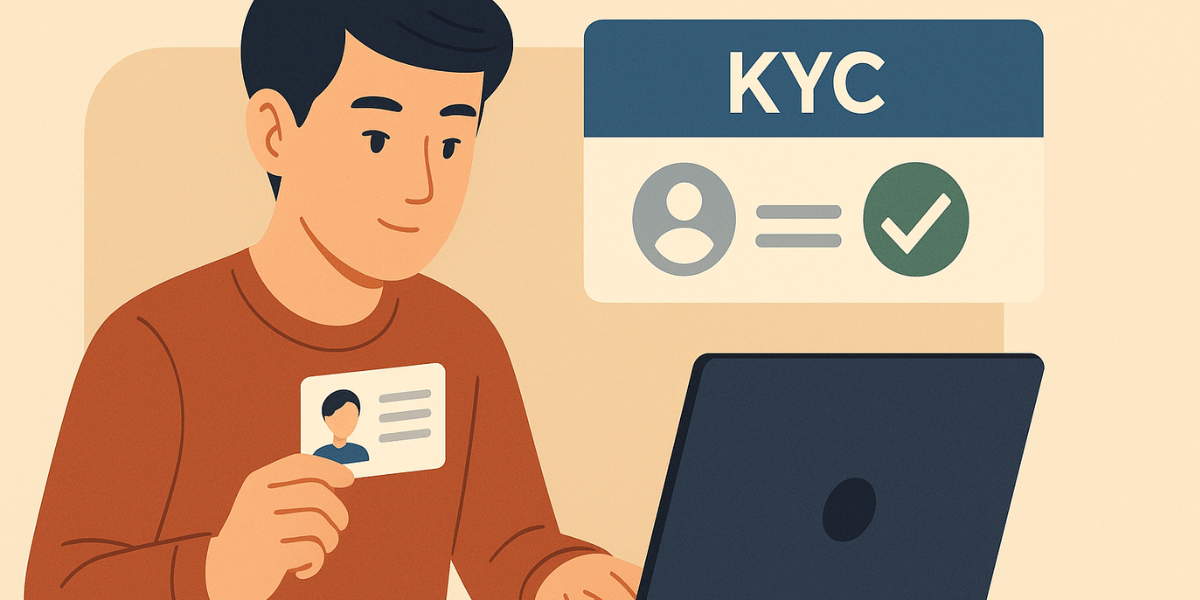Precision is not a luxury in forex; it is the difference between disciplined risk-taking and avoidable losses. The stop-limit order is a tool designed for traders who need conditional participation without surrendering price control. It is stricter than a stop order, more flexible than a simple limit, and deliberately engineered to avoid slippage beyond a predefined threshold. In a market that trades twenty-four hours a day across sessions and liquidity regimes, stop-limit orders allow entries and exits to occur only on your terms.
This article is a complete, practitioner-grade manual on stop-limit orders in the spot FX market. We will define the mechanics clearly, compare them with related order types, and draw out the trade-offs that matter at live speed: execution certainty versus price control, slippage containment versus non-execution risk, and how spreads, volatility, and session liquidity shape real outcomes. You will learn concrete design rules (how far to place stops and limits relative to ATR and spread), broker and platform nuances (time-in-force, partial fills, conversion logic), and integration patterns with momentum breakouts, mean-reversion fades, and portfolio-level risk systems. We conclude with detailed examples, checklists, and a long FAQ section that addresses edge cases professional desks care about.
What a Stop-Limit Order Is
A stop-limit order has two prices and one conditional state. First, a stop price tells the platform when to activate the order. Only after the stop is touched or exceeded does the order become “live.” Second, once live, the order functions as a limit order at your specified limit price, filling at the limit or better (for buys: at or below the limit; for sells: at or above the limit). If the market rushes through the activation level and cannot meet your limit, the order remains pending; it does not chase price.
This duality—conditional activation followed by controlled execution—makes stop-limit orders uniquely suited to traders who want confirmation before entry but refuse to accept unlimited slippage. The trade-off is obvious: you may not get filled in fast markets, and that is by design.
Core Mechanics and Terminology
- Stop price: The trigger threshold. Crossing it activates the order. A buy stop-limit activates when the ask reaches the stop; a sell stop-limit activates when the bid reaches the stop (platform-dependent).
- Limit price: The “worst acceptable” price once active. For a buy stop-limit, set the limit at or above the stop to allow some slippage tolerance; for a sell stop-limit, the limit is at or below the stop.
- Activation window: The price zone between stop and limit in which fills are acceptable.
- Time-in-force (TIF): Day, GTC (good-till-canceled), GTD (good-till-date), IOC/FOK (less common for retail). TIF controls how long the order remains eligible.
- Partial fill: If liquidity is thin at the limit, a portion may fill immediately, with the remainder resting until more liquidity appears or the order expires.
Where Stop-Limit Orders Fit in the Order Landscape
Traders often confuse stop-limits with stops and limits. The best way to see differences is side-by-side.
| Order Type | When It Triggers | How It Executes | Price Control | Execution Certainty | Primary Use |
|---|---|---|---|---|---|
| Market | Immediate | Best available price | None | Highest | Urgent entry/exit |
| Limit | Placed directly | At limit or better | High | Conditional on liquidity | Passive entry/TP |
| Stop-Market (Stop-Loss) | When stop is hit | Becomes market order | Low | High (with slippage risk) | Protective exit; momentum entry |
| Stop-Limit | When stop is hit | Becomes limit order | High | Medium (risk of no fill) | Controlled breakout/exit |
Note the fundamental trade-off: stop-market favors certainty at the cost of slippage; stop-limit favors control at the cost of potential non-execution.
Designing the Stop and Limit Pair
Choosing stop and limit levels should be rule-based, not arbitrary. The rules must account for typical noise (spread + microvolatility), session liquidity, and your strategy’s logic (breakout versus reversal). The following framework is deliberately conservative and designed for reproducibility.
Rule 1: Anchor to Volatility (ATR)
Use a daily or intraday ATR to define “normal” movement. For an intraday breakout, the stop can be placed just beyond the structural trigger (e.g., resistance), and the limit should allow a buffer that reflects a fraction of ATR and the current spread. A common approach:
- Activation distance (from structure): 0.10–0.20 × ATR
- Stop-to-limit gap: max(2–3 × spread, 0.05–0.10 × ATR)
The goal is to permit reasonable slippage that reflects liquidity but to forbid panic fills beyond your edge zone.
Rule 2: Respect the Spread and Side
In FX, the side that triggers matters. If you place a buy stop at 1.0850 and the spread is 1.2 pips, your activation may occur earlier on the ask than on the bid. Set activation and limit calculations with the correct side to avoid premature or delayed triggers.
Rule 3: Session-Aware Buffers
During Asian session, spreads widen in some pairs; during London/NY overlap, slippage risk declines but velocity increases. Widen the stop-to-limit gap during illiquid hours or reduce size to keep effective risk consistent.
Rule 4: Structural Context First
Derive the stop trigger from market structure: break of a well-tested high/low, retest confirmation, or a moving average envelope breach. Only after the structural trigger is defined should the limit be computed as a tolerance overlay, not the other way around.
Execution Nuances that Matter in Spot FX
- Triggering Convention: Many platforms trigger buy stop-limits on ask and sell stop-limits on bid. Always verify your platform’s convention.
- Partial Fills: A portion may execute at the limit; remaining quantity sits until filled or canceled. Decide if you want “all-or-none” behavior; many retail platforms do not support AON.
- Time-in-Force: GTC orders can linger into different liquidity regimes. If your logic is intraday, use Day or GTD to avoid unintended fills the next session.
- Rejection on Gap-Through: In a fast move, the order activates but finds no liquidity inside the limit; it remains working or is rejected (platform settings vary). Plan for non-execution.
- Rollover and Swaps: If the order survives across rollover, spreads can widen markedly. Either suspend during rollover or expand buffers.
When to Prefer Stop-Limit Over Stop-Market
Use stop-limit when your strategy requires both confirmation and price discipline. Common examples:
- Breakout entries that are valid only if price holds a narrow band above the level, not a panic spike far beyond it.
- Re-entry after shakeouts, where you want evidence of stabilization but refuse to chase.
- Portfolio rebalancing where slippage tolerance is strictly budgeted by risk systems.
Use stop-market when your priority is certainty—protective exits, emergency liquidation, or entries that must occur once the level is seen.
Practical Setups Using Stop-Limit Orders
1) Momentum Breakout with Controlled Slippage
Context: EUR/USD has consolidated under 1.1000 for days. Your plan is to buy only if a genuine break occurs, but you refuse to pay above 1.1012.
- Stop (activation) = 1.1002 (just through resistance)
- Limit = 1.1012 (10 pip tolerance; ≈ 0.08 × ATR if ATR=125 pips)
- Time-in-Force = Day
If price trades 1.1002—1.1012, you fill; if it leaps to 1.1025 on news, you do not. You avoid buying into a potential exhaustion spike.
2) Protective Exit with Price Floor
Context: Long GBP/USD from 1.2600 with thesis invalidation at 1.2545. You want to exit if 1.2545 is breached, but fills below 1.2538 are unacceptable due to event-driven gaps.
- Sell stop-limit: Stop = 1.2545; Limit = 1.2538
You might miss the exit if a gap prints 1.2525, but that is acceptable because your policy forbids selling far below fair value during illiquid bursts. You accept the risk of no fill, preferring control over certainty. If certainty is required, use stop-market instead.
3) Reversal Confirmation
Context: USD/JPY prints a bullish engulfing off support. You want confirmation above the engulfing high but only inside a tight band.
- Buy stop-limit: Stop at pattern high + 1 pip; Limit 6–8 pips above stop to allow normal microstructure, scaled to spread.
Sizing, Risk, and the Mathematics of Missed Fills
Risk is not only the loss you take; it is also the opportunity you forgo. Stop-limit orders introduce missed-trade risk, which can impact expectancy if your filters are too strict. A simple way to calibrate:
- Backtest the setup with stop-market entries to measure baseline expectancy and win rate.
- Re-run with a stop-limit tolerance band (e.g., 0.05 × ATR). Count how many “valid” entries would be missed and how slippage is reduced on those filled.
- Compare net expectancy after accounting for both fewer trades and improved average entry price.
If the tolerance band is too narrow, you will miss high-quality trades and reduce throughput. If it is too wide, you reintroduce the slippage you aimed to eliminate. The sweet spot minimizes regret from both directions.
A Parameter Blueprint
Use the following blueprint as a starting point and then tailor to pair/session:
- Stop placement: Structural trigger +/- 1–3 pips beyond the level to reduce false activations.
- Limit distance: 2–3 × spread in liquid sessions, 3–5 × spread in thin sessions; also express as 0.05–0.10 × ATR.
- Time-in-force: Day for intraday strategies; GTC with periodic review for swing strategies.
- Order quantity: Volatility-adjusted so that a worst-case fill at the limit still respects per-trade risk.
Common Mistakes and Practical Fixes
| Mistake | Why It Hurts | Fix |
|---|---|---|
| Stop and limit too close (inside spread) | Immediate rejections or no logical tolerance | Set gap ≥ 2–3 × spread; scale by ATR |
| Ignoring bid/ask trigger side | Premature or delayed activation | Configure triggers using correct side per platform |
| GTC left through rollover | Widened spreads cause unwanted fills | Use Day or suspend around rollover |
| Using stop-limit as a stop-loss substitute | Non-execution during gaps; risk persists | Use stop-market for must-exit situations |
| No session-aware adjustment | Thin liquidity increases miss rate | Widen tolerance or trade during liquid windows |
Integrating with Systematic Strategies
Breakout Systems
Define a price structure trigger (range high), confirm with a momentum filter (e.g., RSI baseline), then deploy a stop-limit with a tolerance band that matches the typical breakout velocity for the pair. The limit band should be wide enough to include healthy follow-through, not just the first tick beyond resistance.
Mean-Reversion Systems
Use stop-limit to enter only after reversal confirmation (e.g., above the reversal candle high for longs). This avoids “knife-catching” and aligns entries to post-reversion liquidity.
Portfolio and Risk Systems
At the portfolio level, pair stop-limit execution with exposure caps by theme (e.g., total USD risk) and per-session gross limits. If a stop-limit entry would breach risk caps at the limit price, the OMS should automatically reduce quantity or reject the order.
Case Study: Designing, Executing, and Reviewing
Scenario: You trade a London-breakout system on EUR/USD. Daily ATR is 90 pips; London open spread averages 0.7 pips. Your rule: buy a break of the Asian high by 2 pips, but never above 9 pips past the high.
- Asian high: 1.0978
- Stop (activation): 1.0980
- Limit: 1.0987 (≈ 0.08 × ATR and ≈ 10 × spread)
- Quantity: sized so a worst fill at 1.0987 with stop-loss at 1.0962 risks 0.5% equity
Outcomes to log:
- Filled inside band; measure realized slippage versus theoretical.
- Not filled; did price extend meaningfully or revert quickly? Missed-trade analysis informs band adjustments.
- Partial fills; did remaining quantity fill fairly or remain stranded? Consider IOC for partial or accept resting behavior.
Testing and Governance
A credible process includes pre-trade logic and post-trade audits:
- Define: Structural triggers, volatility filters, session windows, stop-limit gap formula, and TIF.
- Backtest: Simulate with slippage models that reflect session spreads; count fill probability under different gaps.
- Pilot: Trade reduced size for 4–8 weeks; record fill quality and miss rate by session.
- Review: Adjust the gap only on schedule; never after a single bad or good day.
Operational Checklist
- Is the structural trigger objective and repeatable
- Are stop and limit distances derived from spread and ATR, not guesswork
- Does TIF match the intended horizon
- Is the order side aligned with the platform’s bid/ask trigger convention
- Have you accounted for rollover widenings and major data releases
- Does worst-case fill at the limit still respect per-trade and portfolio risk caps
Comparison: Stop-Limit vs Alternative Execution Controls
| Control | What It Does | Pros | Cons | Best Use |
|---|---|---|---|---|
| Stop-Limit | Triggers then limits price | Prevents excessive slippage | Risk of no fill | Disciplined breakouts, controlled exits |
| Stop-Market | Triggers then executes at market | High certainty | Unknown slippage | Emergency exits; must-fill entries |
| Limit | Passive at a fixed price | Price control | No confirmation | Pullbacks; take-profits |
| Bracket (OCO) | TP + SL around a position | Full lifecycle control | Needs accurate sizing | After entry management |
Edge Cases and Professional Considerations
- News windows: Some desks disable new stop-limit entries 5–10 minutes around tier-1 events to avoid dysfunctional microstructure.
- Cross pairs: Liquidity can be thinner, widen tolerance bands, or prioritize majors for stop-limit logic.
- Scaling in: A sequence of stop-limit entries can stair-step into trends while capping per-step slippage; control cumulative risk with theme caps.
- Cancel/replace discipline: If structure changes (e.g., new swing high), cancel stale orders and recalc levels; do not “hope” old orders still make sense.
Conclusion
Stop-limit orders translate trading intent into enforceable execution. They let you demand proof (activation) while insisting on fairness (limit), and they make it harder for emotion to hijack your process. The price of this control is the acceptance of non-execution when the market runs without you. That is not a bug; it is the feature that preserves expectancy when slippage would otherwise degrade your edge. With volatility-aware gaps, session-aware practices, and portfolio-level risk alignment, stop-limit orders become an asset in both discretionary and systematic playbooks—an engineering solution to a human problem: acting only when conditions are right, and only at prices that keep the odds on your side.
Frequently Asked Questions
What exactly is the difference between a stop-limit and a stop-loss order
A stop-loss (stop-market) becomes a market order when triggered and will execute at the next available price, which can involve slippage. A stop-limit becomes a limit order when triggered and executes only at your limit price or better. It caps slippage but introduces the risk of not getting filled.
How far should I set the limit from the stop?
There is no single optimal gap, but a practical rule is 2–3 times the spread in liquid hours, widened to 3–5 times the spread in thin hours, and also expressed as 0.05–0.10 times ATR for the timeframe you trade. Backtest to calibrate fill rate versus slippage savings.
Do stop-limit orders work well during news events?
They prevent extreme slippage but may not fill if price gaps beyond your limit. Many traders simply disable new stop-limit entries around tier-1 releases and rely on stop-market only for protective exits.
Why was my stop-limit not filled even though the chart shows price traded through my limit?
Charts often display mid-price; orders fill on bid/ask. If your buy stop-limit used the ask to trigger and the ask never printed your limit, you would not fill even if the mid did. Always verify with bid/ask data.
Can I use stop-limit orders for exits as well as entries?
Yes. For exits, stop-limit acts as a price floor/ceiling to avoid capitulating far from fair value. Be aware that non-execution risk is dangerous for must-exit scenarios; consider stop-market for mandatory protection.
Are stop-limit orders available on all FX brokers?
Most ECN-style platforms support them, but implementation details vary: trigger on bid/ask, partial fill handling, and time-in-force options. Test in a sandbox and read platform specifications.
What time-in-force should I choose?
Use Day for intraday strategies so orders do not linger into different regimes; use GTC or GTD for swing systems but review regularly. IOC/FOK variants are less common for retail but can control partial fills where supported.
How do I account for rollover and widened spreads?
Around rollover, many pairs see transient spread expansion. Either pause new stop-limit orders in that window or widen your stop-to-limit gap to avoid spurious activations and rejections.
Can I combine stop-limit with bracket orders?
Yes. A stop-limit can govern entry and a bracket (take-profit plus stop-loss) can govern exit. Ensure worst-case fill at the entry limit still keeps your bracket risk within tolerance.
What if my strategy requires certainty more than price control?
Use stop-market. Stop-limit is a tool for conditional participation with defined slippage tolerance. When you must be in or out, certainty takes priority over price control.
How do I test whether stop-limit improves my system?
Backtest with realistic spread/slippage models by session. Compare baseline (stop-market) to stop-limit with several tolerance bands. Evaluate changes in fill rate, slippage, and overall expectancy. Adopt the band that maximizes expectancy while keeping drawdowns acceptable.
Does stop-limit make sense for scalping?
Rarely. Scalping depends on fill certainty and speed. The non-execution risk of stop-limit often undermines scalps. It is better suited to breakouts, pullbacks, and swing entries where a small tolerance band is meaningful.
What is the biggest mistake traders make with stop-limit orders?
Using them as a substitute for mandatory protection. If you cannot tolerate not being filled, you should not use stop-limit for that leg. The second common mistake is setting the limit gap inside the spread or so tight that the strategy’s best trades are routinely missed.
Note: Any opinions expressed in this article are not to be considered investment advice and are solely those of the authors. Singapore Forex Club is not responsible for any financial decisions based on this article's contents. Readers may use this data for information and educational purposes only.







